Sarah L. Johnson's Blog, page 139
July 10, 2011
A visual preview of UK historical novels for late summer and autumn
With historical settings ranging from ancient Greece to Tudor England to 17th-century France to 19th-century India, here are some personal picks of historical novels set to be published in the UK over the next four months.

A.L. Berridge's In the Name of the King is swashbucking adventure set in France during the Thirty Years' War, a most uncommon setting. In 1640, the Chevalier de Roland tangles with a cruel nobleman to save a young woman's honor and finds himself enmeshed in a political conspiracy. 2nd in series after Honour and the Sword. Penguin, August 4th.

The forbidden romance between an Indian prince and an Englishwoman heats up colonial Lucknow, India, even as the couple battles society's prejudices and violence erupts all around them. A debut novel for Sangeeta Bhargava. Allison & Busby, July 25th.

Fiona Buckley's historical mystery heroine, Elizabethan lady-in-waiting Ursula Blanchard, re-emerges in this 9th entry in the series, which focuses on a covert plot to replace the queen with her Scots cousin. Doesn't the lady on the cover look like a 16th-century version of Adele? Creme de la Crime (now a Severn House imprint), Sept 29th.
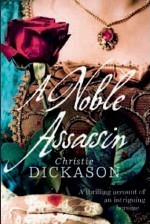
Dickason has made a literary home for herself in 17th-century England. The little-known story of Lucy Russell, Countess of Bedford, a daring noblewoman who becomes a peace-weaver between James I and his daughter, Elizabeth of Bohemia, after Elizabeth and her husband lose their throne. Harper, November 24th.
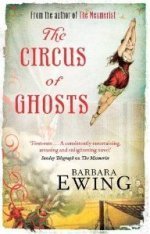
Ewing is a versatile novelist, having mastered a variety of settings from Victorian and modern London to the colonial world of her native New Zealand. I believe this is her first American outing. Circus of Ghosts takes place in a circus in late 1840s New York and focuses on a mysterious woman adept at the dark art of mesmerism. Sequel to The Mesmerist. Sphere, July 28th.
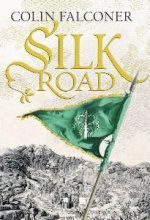
Historical adventure in 13th-century Asia, as a Knight Templar travels from Palestine to the Mongol city of Xanadu to form an alliance against the Saracens - and encounters a Tartar warrior princess that complicates his plans. Why aren't more of Colin Falconer's novels published in the US? Atlantic, October 1.
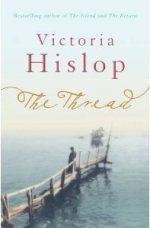
A multi-period family saga set in Thessaloniki, Greece, in 1917 and ninety years later. I found Hislop's The Island a smoothly written, satisfying, and uplifting tale about a traumatic historical period, so I expect the same to be true here. Headline Review, October 27.
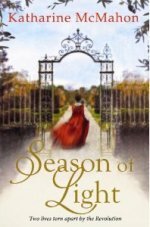
This one will be a must-purchase based on my experience reading McMahon's fabulous The Crimson Rooms. Season of Light, a love story set in pre-Revolutionary Paris, centers on a young Englishwoman, Asa Ardleigh, who falls in love with a dashing intellectual at the salon of Madame de Genlis. Weidenfeld & Nicolson, November 1.

This debut novel from Madeline Miller, an American classical historian, retells the story of the Trojan War from the viewpoint of Patroclus, good friend and more to the heroic Achilles, bringing to life elements of the tale that Homer only hinted at. Love, battles, and the hidden schemings of the gods. Bloomsbury, September 6th; also Ecco/HarperCollins US, next March.
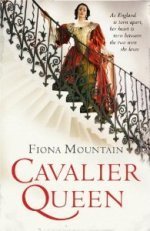
Among all of the queens of England, Henrietta Maria is one of the few whose story has rarely been told in fiction. Described as an "English Gone with the Wind" by the publisher, Fiona Mountain's Cavalier Queen tells the story of a woman torn between the king who loves her and the man, Henry Jermyn, who wins her favor and supports her through years of exile and danger. Preface, October 25th.
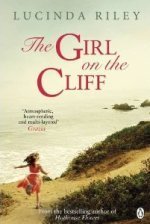
Lucinda Riley's followup to her epic saga Hothouse Flower deals with two families and their tangled history in London and in Ireland during WWI. Penguin, October 13th.
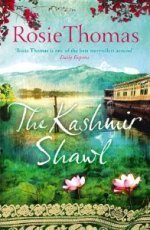
A young woman in modern Wales traces her grandparents' lives in WWII-era Kashmir when she discovers an antique shawl in her father's house, and a lock of hair in an envelope tucked within it. The review at The Bookbag intrigues me. What a colorful and eye-catching cover, though almost too much is going on with it. HarperCollins, July 21st.

In this novel of the gem trade in Tudor-era Europe, Henry VIII is a vigorous man of 36 who has just fallen in love with Anne Boleyn. The main character of Will Whitaker's The King's Diamond, though, is jewel merchant Richard Dansey, whose determination to seize control of the family business leads him into danger. HarperPress, July 21st.

A.L. Berridge's In the Name of the King is swashbucking adventure set in France during the Thirty Years' War, a most uncommon setting. In 1640, the Chevalier de Roland tangles with a cruel nobleman to save a young woman's honor and finds himself enmeshed in a political conspiracy. 2nd in series after Honour and the Sword. Penguin, August 4th.

The forbidden romance between an Indian prince and an Englishwoman heats up colonial Lucknow, India, even as the couple battles society's prejudices and violence erupts all around them. A debut novel for Sangeeta Bhargava. Allison & Busby, July 25th.

Fiona Buckley's historical mystery heroine, Elizabethan lady-in-waiting Ursula Blanchard, re-emerges in this 9th entry in the series, which focuses on a covert plot to replace the queen with her Scots cousin. Doesn't the lady on the cover look like a 16th-century version of Adele? Creme de la Crime (now a Severn House imprint), Sept 29th.

Dickason has made a literary home for herself in 17th-century England. The little-known story of Lucy Russell, Countess of Bedford, a daring noblewoman who becomes a peace-weaver between James I and his daughter, Elizabeth of Bohemia, after Elizabeth and her husband lose their throne. Harper, November 24th.

Ewing is a versatile novelist, having mastered a variety of settings from Victorian and modern London to the colonial world of her native New Zealand. I believe this is her first American outing. Circus of Ghosts takes place in a circus in late 1840s New York and focuses on a mysterious woman adept at the dark art of mesmerism. Sequel to The Mesmerist. Sphere, July 28th.

Historical adventure in 13th-century Asia, as a Knight Templar travels from Palestine to the Mongol city of Xanadu to form an alliance against the Saracens - and encounters a Tartar warrior princess that complicates his plans. Why aren't more of Colin Falconer's novels published in the US? Atlantic, October 1.

A multi-period family saga set in Thessaloniki, Greece, in 1917 and ninety years later. I found Hislop's The Island a smoothly written, satisfying, and uplifting tale about a traumatic historical period, so I expect the same to be true here. Headline Review, October 27.

This one will be a must-purchase based on my experience reading McMahon's fabulous The Crimson Rooms. Season of Light, a love story set in pre-Revolutionary Paris, centers on a young Englishwoman, Asa Ardleigh, who falls in love with a dashing intellectual at the salon of Madame de Genlis. Weidenfeld & Nicolson, November 1.

This debut novel from Madeline Miller, an American classical historian, retells the story of the Trojan War from the viewpoint of Patroclus, good friend and more to the heroic Achilles, bringing to life elements of the tale that Homer only hinted at. Love, battles, and the hidden schemings of the gods. Bloomsbury, September 6th; also Ecco/HarperCollins US, next March.

Among all of the queens of England, Henrietta Maria is one of the few whose story has rarely been told in fiction. Described as an "English Gone with the Wind" by the publisher, Fiona Mountain's Cavalier Queen tells the story of a woman torn between the king who loves her and the man, Henry Jermyn, who wins her favor and supports her through years of exile and danger. Preface, October 25th.

Lucinda Riley's followup to her epic saga Hothouse Flower deals with two families and their tangled history in London and in Ireland during WWI. Penguin, October 13th.

A young woman in modern Wales traces her grandparents' lives in WWII-era Kashmir when she discovers an antique shawl in her father's house, and a lock of hair in an envelope tucked within it. The review at The Bookbag intrigues me. What a colorful and eye-catching cover, though almost too much is going on with it. HarperCollins, July 21st.

In this novel of the gem trade in Tudor-era Europe, Henry VIII is a vigorous man of 36 who has just fallen in love with Anne Boleyn. The main character of Will Whitaker's The King's Diamond, though, is jewel merchant Richard Dansey, whose determination to seize control of the family business leads him into danger. HarperPress, July 21st.
Published on July 10, 2011 11:00
July 5, 2011
Guest post from Eileen Clymer Schwab: Shining a Light on Dark Times
I'd like to welcome Eileen Clymer Schwab to the blog today. In the following post, she discusses what inspires her to write about a tumultuous time in history - slavery in pre-Civil War America - and what she learned while researching the Underground Railroad. Thanks, Eileen, for a thought-provoking post, which pinpoints the reasons I enjoy novels set during this period, too (and why I wish there were more of them). If this isn't enough to get readers interested, Shadow of a Quarter Moon has an awesome cover. I'll be writing a review of it here in the coming weeks.
Shining a Light on Dark Times
One of the questions I often hear from readers is, "Do you find it difficult to write novels that are set in such a brutal period of American history?"
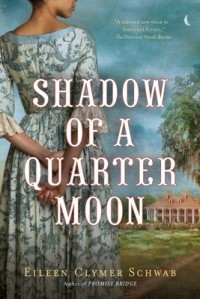 Let me confide to you that I am a "happily ever after" kind of gal. So the fact that I've written two novels against the backdrop of slavery in the 1800s may seem like a highly unusual choice. After all, what good can be gained by stirring old ghosts? For this reason, there is not a lot of adult fiction written about this period. I suspect this is because it is not a time our nation is proud of or wishes to reminisce over. Instead we hide it from sight like an ugly scar. Readers and writers alike often avoid revisiting these pre-Civil War years because of the horror and shame it stirs in our moral conscience.
Let me confide to you that I am a "happily ever after" kind of gal. So the fact that I've written two novels against the backdrop of slavery in the 1800s may seem like a highly unusual choice. After all, what good can be gained by stirring old ghosts? For this reason, there is not a lot of adult fiction written about this period. I suspect this is because it is not a time our nation is proud of or wishes to reminisce over. Instead we hide it from sight like an ugly scar. Readers and writers alike often avoid revisiting these pre-Civil War years because of the horror and shame it stirs in our moral conscience.
As an author, I am inspired by the strength and courage of ordinary people in extraordinary circumstances; how friends, family, and inner conviction can change the course of our lives. Endless stories of inspiration, danger, upheaval, and bold beginnings are waiting to be unearthed from the ashes. In keeping the door closed on this period, we miss the chance to celebrate and marvel at the incredible acts of courage and daring deeds that were the genesis of social change in our country. The secret network known as the Underground Railroad is the perfect example of the best of America in the worst of America, and it serves as a vehicle of transformation for the main character in my latest novel.
In Shadow of a Quarter Moon, an unimaginable secret changes the course of Jacy Lane's life; not once, but twice. First, when it is hidden from her, and then when it is revealed. As the daughter of a plantation owner, Jacy has been raised in privilege until she discovers that she is the offspring of a dalliance between her father and a slave. Amid the shock and complexities of her mixed heritage, Jacy is simply a woman longing for love, happiness, and a sense of wholeness; however the 1800s are not a simple time, and Jacy begins a treacherous journey of denial and self-discovery that is fraught with danger and life-altering choices. She soon discovers that what she chases is as elusive as the secret network she hopes can save them.
Writing a novel against this turbulent backdrop required a great deal of research. Often it was heart-wrenching, and at other times, awe-inspiring. For me, research is a process of discovery – not just of historical facts, but of tendencies, beliefs, and nuances of the time. Through this process I become better acquainted with my characters and the world around them. I wanted to touch and see as much as I could, beginning at the library, as well as visiting places like the Underground Railroad Freedom Center in Cincinnati and other historic sites found within our National Underground Railroad Network to Freedom. So often the surprises discovered in research shift plotlines or shape characters in unexpected ways. For example, while doing some research in North Carolina, I came across Dismal Swamp. As a writer, I could not overlook a name so vivid and descriptive, and I knew it would be mentioned in my story. At the time, I had no idea that the bleak sounding region was so rich and storied in Underground Railroad history, or that it would play such a significant role in my novel.
[image error] Shadow of a Quarter Moon and my first novel, Promise Bridge, shine light on both the villainous and heroic activity of that dark time. It was an honor to look back and give voice to a generation deserving of acknowledgment, tribute, and literary life, as with any other period in our history. Remembering and discussing their trials and triumphs can be one way of paying respect to their role in our social evolution. My hope is that the spirit of the Underground Railroad will never be forgotten.
---
Visit Eileen Clymer Schwab at her website, blog, on Facebook, and on Twitter. Shadow of a Quarter Moon is published today, July 5th, by NAL at $15.00 (trade paperback, 400pp). (Photo credit: Portrait Innovations)
Shining a Light on Dark Times
One of the questions I often hear from readers is, "Do you find it difficult to write novels that are set in such a brutal period of American history?"
 Let me confide to you that I am a "happily ever after" kind of gal. So the fact that I've written two novels against the backdrop of slavery in the 1800s may seem like a highly unusual choice. After all, what good can be gained by stirring old ghosts? For this reason, there is not a lot of adult fiction written about this period. I suspect this is because it is not a time our nation is proud of or wishes to reminisce over. Instead we hide it from sight like an ugly scar. Readers and writers alike often avoid revisiting these pre-Civil War years because of the horror and shame it stirs in our moral conscience.
Let me confide to you that I am a "happily ever after" kind of gal. So the fact that I've written two novels against the backdrop of slavery in the 1800s may seem like a highly unusual choice. After all, what good can be gained by stirring old ghosts? For this reason, there is not a lot of adult fiction written about this period. I suspect this is because it is not a time our nation is proud of or wishes to reminisce over. Instead we hide it from sight like an ugly scar. Readers and writers alike often avoid revisiting these pre-Civil War years because of the horror and shame it stirs in our moral conscience.As an author, I am inspired by the strength and courage of ordinary people in extraordinary circumstances; how friends, family, and inner conviction can change the course of our lives. Endless stories of inspiration, danger, upheaval, and bold beginnings are waiting to be unearthed from the ashes. In keeping the door closed on this period, we miss the chance to celebrate and marvel at the incredible acts of courage and daring deeds that were the genesis of social change in our country. The secret network known as the Underground Railroad is the perfect example of the best of America in the worst of America, and it serves as a vehicle of transformation for the main character in my latest novel.
In Shadow of a Quarter Moon, an unimaginable secret changes the course of Jacy Lane's life; not once, but twice. First, when it is hidden from her, and then when it is revealed. As the daughter of a plantation owner, Jacy has been raised in privilege until she discovers that she is the offspring of a dalliance between her father and a slave. Amid the shock and complexities of her mixed heritage, Jacy is simply a woman longing for love, happiness, and a sense of wholeness; however the 1800s are not a simple time, and Jacy begins a treacherous journey of denial and self-discovery that is fraught with danger and life-altering choices. She soon discovers that what she chases is as elusive as the secret network she hopes can save them.
Writing a novel against this turbulent backdrop required a great deal of research. Often it was heart-wrenching, and at other times, awe-inspiring. For me, research is a process of discovery – not just of historical facts, but of tendencies, beliefs, and nuances of the time. Through this process I become better acquainted with my characters and the world around them. I wanted to touch and see as much as I could, beginning at the library, as well as visiting places like the Underground Railroad Freedom Center in Cincinnati and other historic sites found within our National Underground Railroad Network to Freedom. So often the surprises discovered in research shift plotlines or shape characters in unexpected ways. For example, while doing some research in North Carolina, I came across Dismal Swamp. As a writer, I could not overlook a name so vivid and descriptive, and I knew it would be mentioned in my story. At the time, I had no idea that the bleak sounding region was so rich and storied in Underground Railroad history, or that it would play such a significant role in my novel.
[image error] Shadow of a Quarter Moon and my first novel, Promise Bridge, shine light on both the villainous and heroic activity of that dark time. It was an honor to look back and give voice to a generation deserving of acknowledgment, tribute, and literary life, as with any other period in our history. Remembering and discussing their trials and triumphs can be one way of paying respect to their role in our social evolution. My hope is that the spirit of the Underground Railroad will never be forgotten.
---
Visit Eileen Clymer Schwab at her website, blog, on Facebook, and on Twitter. Shadow of a Quarter Moon is published today, July 5th, by NAL at $15.00 (trade paperback, 400pp). (Photo credit: Portrait Innovations)
Published on July 05, 2011 06:00
June 29, 2011
Book review: Death at Pullman, by Frances McNamara
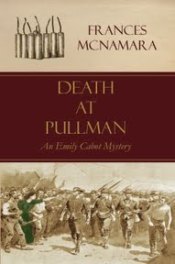 Frances McNamara's follow-up to
Death at Hull House
sees her enterprising young protagonist, former university student Emily Cabot, involved in tracking down another killer in late 19th-century Chicagoland. Emily is more of an interested observer than a classic amateur detective, which lets the story unfold more realistically than many other mysteries of this type. The plot is based around a historical incident whose authenticity remains intact.
Frances McNamara's follow-up to
Death at Hull House
sees her enterprising young protagonist, former university student Emily Cabot, involved in tracking down another killer in late 19th-century Chicagoland. Emily is more of an interested observer than a classic amateur detective, which lets the story unfold more realistically than many other mysteries of this type. The plot is based around a historical incident whose authenticity remains intact.In 1894, employees of the Pullman Palace Car Company, creator of sleeper cars for luxurious passenger travel by rail, have gone on strike. With demand for their products slowing down, wages have been cut, but rents in the company town of Pullman, Illinois, have held steady – forcing the workers into abject poverty. Emily and her mentor from Hull House, Jane Addams, arrive in Pullman to help bring about a solution to the crisis, which Emily thinks won't take long to achieve. Unfortunately, she's wrong. Soon after the women arrive, a young worker of Irish descent is found hanged, and a sign at the murder scene accuses him of being a spy for the company.
Tensions heat up. The American Railway Union muscles its way in on the workers' side, wealthy George Pullman refuses to budge, and travel is brought to a standstill. While her friend Dr. Stephen Chapman takes care of the medical needs of the employees and their families, Emily has her hands full running a food supply station, growing more sympathetic to their plight every day. The model town of Pullman has proved to be anything but.
The combination of labor unrest, rivalries among local families, and past romantic intrigues is a combustible mix, an edgy scenario that is laid out convincingly, just eight years after Chicago's deadly Haymarket affair. As Emily transforms from idealistic outsider to central player in the escalating conflict, she grows in confidence, proceeding with resoluteness of purpose while remaining aware of the tragic missteps on both sides. By this third book in the series, Emily has come into her own. Death at Pullman is a suspenseful re-creation of a critical moment in American social history, as seen from the viewpoint of a strong-willed, engaging fictional heroine.
Death at Pullman was published by Allium Press of Chicago, a small press focusing on titles of historical Chicago interest, in March at $14.99 (trade pb, 250pp).
Published on June 29, 2011 19:21
June 22, 2011
Bride Flight giveaway winners
I feel I should be writing more about the Historical Novel Society conference, which was wonderful - thanks so much to all of the speakers, editors & agents, volunteers, and all of the attendees for participating. I returned late Monday night after a very long flight (and having to repack my bag in the middle of the San Diego airport because it went over the weight limit - too many books!). Since I'm still completely exhausted, and have a deadline for August's Historical Novels Review and some new responsibilities at work to take care of asap, I'm going to post more about the conference at a later time, I hope.
In the meantime, I wanted to announce the three winners of the Bride Flight giveaway contest. Copies of the book as well as sets of movie passes will be going out to: Linda B, Elizabeth D, and Noreen F. I'll be in touch via email with details, and congratulations!
In the meantime, I wanted to announce the three winners of the Bride Flight giveaway contest. Copies of the book as well as sets of movie passes will be going out to: Linda B, Elizabeth D, and Noreen F. I'll be in touch via email with details, and congratulations!
Published on June 22, 2011 06:52
June 15, 2011
En route to San Diego
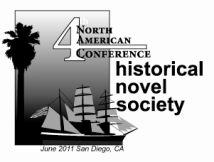 I'm on my way to San Diego (literally - I'm writing this during an unexpectedly long layover at O'Hare) for the 4th North American Historical Novel Society conference. A group of us have been planning this event for the last two years, and I'm really looking forward to it!
I'm on my way to San Diego (literally - I'm writing this during an unexpectedly long layover at O'Hare) for the 4th North American Historical Novel Society conference. A group of us have been planning this event for the last two years, and I'm really looking forward to it!The trip started off appropriately, as I got to talking with another traveler while waiting in Champaign - she was reading Sarah Blake's The Postmistress so I mentioned where I was heading... and recommended the author's earlier novel Grange House . She told me she'd look out for it.
I'll try to post some pics here from the conference, and I'll also be tweeting from the event as time permits. For those who'd like to follow along with the conference virtually, look for the #HNS11 hashtag.
Today's plans - after our plane shows up and we finally get out of here - are to get to the hotel, hang around a bit, and commence to stuffing the goody bags!
Published on June 15, 2011 10:22
June 9, 2011
A Unique Giveaway: Book & Movie Passes for "Bride Flight"
Hello blog readers -- today I have a unique giveaway to offer you. As you know, I haven't been doing many contests, but this one caught my attention because the book and film appeal to me personally. Literature in translation + historical setting + a story about women on an international journey... who can beat that?
"Bride Flight" is a brand new historical film that's based on Marieke van der Pol's recent novel of the same name. It opens in US cities starting on Friday, June 10th, then expands across the country through July. I'll be looking to see if it comes to Champaign-Urbana.
Music Box Films, a major distributor of non-English language feature films in the United States, is sponsoring a giveaway of three copies of Marieke van der Pol's novel Bride Flight. As a bonus, a pair of movie passes will be provided to the three winners, for a Mon-Thurs screening at a participating theater in their area. (Winners would provide the theater name if this is of interest... see the film's website and click on Screenings at the top to see participating theaters and dates.)
More about the film:
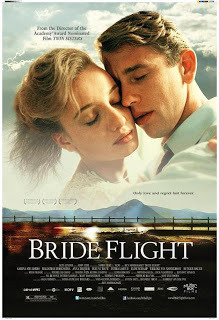
* * * IN THEATERS BEGINNING FRIDAY, JUNE 10TH * * *
"BRIDE FLIGHT"
Only love and regret last forever
"Fascinating, beautifully acted and magnificently photographed." -- Rex Reed, NY Observer
BRIDE FLIGHT is a lavish romantic drama inspired by the true story of the 1953 KLM flight that won the "Last Great Air Race" from London to Christchurch. The flight was dubbed "Bride Flight" by the international press, because of its special passengers -- young women with wedding dresses in their suitcases, traveling to join their fiancés who had already emigrated to New Zealand.
Leaving behind the gloom and scarcity of post-WWII Europe, shy but sensual farm girl Ada, dogmatic Marjorie, and Jewish fashion designer Esther are filled with hope for a future of love and freedom. Each takes a very different journey in their strange new land, but together with handsome bachelor Frank, their paths continue to cross with chance meetings resulting in adultery, betrayal and near tragedy leading up to a reunion fifty years later.
Honored with Audience Awards at film festivals across the country, BRIDE FLIGHT evokes a time of slim choices and desperate optimism, with sweeping views of the New Zealand countryside, stunning period dresses, and the faint smell of Pinot Noir from the thriving vineyard Frank establishes in New Zealand. (A Music Box Films release.)
http://www.brideflightmovie.com/
http://www.facebook.com/brideflight
Directed by Ben Sombogaart. Stars Waldemar Torenstra, Karina Smulders, Anna Drijver, Elise Schaap, Rutger Hauer, Pleuni Touw.
The original novel was published by Portobello Books (UK) in paperback earlier this year. It was translated from the Dutch by Colleen Higgins. I have a copy in hand for myself and will be reviewing it here sometime soon.

To enter the giveaway, please fill out the form below. Because this contest is for the film's US release, this offer is limited to US residents only. Deadline is Sunday, June 19th, after which I'll be randomly selecting and contacting the winners. Good luck to all entrants!
Loading...
"Bride Flight" is a brand new historical film that's based on Marieke van der Pol's recent novel of the same name. It opens in US cities starting on Friday, June 10th, then expands across the country through July. I'll be looking to see if it comes to Champaign-Urbana.
Music Box Films, a major distributor of non-English language feature films in the United States, is sponsoring a giveaway of three copies of Marieke van der Pol's novel Bride Flight. As a bonus, a pair of movie passes will be provided to the three winners, for a Mon-Thurs screening at a participating theater in their area. (Winners would provide the theater name if this is of interest... see the film's website and click on Screenings at the top to see participating theaters and dates.)
More about the film:

* * * IN THEATERS BEGINNING FRIDAY, JUNE 10TH * * *
"BRIDE FLIGHT"
Only love and regret last forever
"Fascinating, beautifully acted and magnificently photographed." -- Rex Reed, NY Observer
BRIDE FLIGHT is a lavish romantic drama inspired by the true story of the 1953 KLM flight that won the "Last Great Air Race" from London to Christchurch. The flight was dubbed "Bride Flight" by the international press, because of its special passengers -- young women with wedding dresses in their suitcases, traveling to join their fiancés who had already emigrated to New Zealand.
Leaving behind the gloom and scarcity of post-WWII Europe, shy but sensual farm girl Ada, dogmatic Marjorie, and Jewish fashion designer Esther are filled with hope for a future of love and freedom. Each takes a very different journey in their strange new land, but together with handsome bachelor Frank, their paths continue to cross with chance meetings resulting in adultery, betrayal and near tragedy leading up to a reunion fifty years later.
Honored with Audience Awards at film festivals across the country, BRIDE FLIGHT evokes a time of slim choices and desperate optimism, with sweeping views of the New Zealand countryside, stunning period dresses, and the faint smell of Pinot Noir from the thriving vineyard Frank establishes in New Zealand. (A Music Box Films release.)
http://www.brideflightmovie.com/
http://www.facebook.com/brideflight
Directed by Ben Sombogaart. Stars Waldemar Torenstra, Karina Smulders, Anna Drijver, Elise Schaap, Rutger Hauer, Pleuni Touw.
The original novel was published by Portobello Books (UK) in paperback earlier this year. It was translated from the Dutch by Colleen Higgins. I have a copy in hand for myself and will be reviewing it here sometime soon.

To enter the giveaway, please fill out the form below. Because this contest is for the film's US release, this offer is limited to US residents only. Deadline is Sunday, June 19th, after which I'll be randomly selecting and contacting the winners. Good luck to all entrants!
Loading...
Published on June 09, 2011 19:35
June 6, 2011
Guest post from Evan Ostryzniuk: The problem of knighthood in the late Middle Ages
Debut novelist Evan Ostryzniuk is stopping by today with a terrific guest essay on the changing meaning of knighthood in 14th-century Europe. His book, Of Faith and Fidelity, the first volume in the English Free Company Series, is published on June 9th by Knox Robinson Publishing.
The problem of knighthood in the late Middle Ages: the case of Geoffrey Hotspur
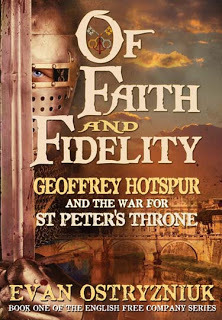 The consensus among historians is that the better part of the 14th century can be considered 'transitional' from the high Middle Ages, which was dominated by scholasticism, rigid feudal relations and a gothic sensibility, to the Renaissance, which engendered the birth of Humanism, merchant capitalism and the recovery of Europe's classical heritage. This raises a problem for the young Geoffrey Hotspur, the main character in my novel Of Faith and Fidelity, because almost since birth he has been training to become a knight in the very conventional sense, and if 14th century society no longer places much value in that station, then he will be lost. The challenges before the squire, then, is whether he can find a place for himself as a traditional knight, assuming that the title worth seeking once he gets a glimpse of the outside world, and how much he will have to adapt his ideal to the shifting social, economic and military landscape of late medieval Europe. However, before the cloistered orphan can make any decisions, he will have to meet head-on those manifestations of a new and emerging culture.
The consensus among historians is that the better part of the 14th century can be considered 'transitional' from the high Middle Ages, which was dominated by scholasticism, rigid feudal relations and a gothic sensibility, to the Renaissance, which engendered the birth of Humanism, merchant capitalism and the recovery of Europe's classical heritage. This raises a problem for the young Geoffrey Hotspur, the main character in my novel Of Faith and Fidelity, because almost since birth he has been training to become a knight in the very conventional sense, and if 14th century society no longer places much value in that station, then he will be lost. The challenges before the squire, then, is whether he can find a place for himself as a traditional knight, assuming that the title worth seeking once he gets a glimpse of the outside world, and how much he will have to adapt his ideal to the shifting social, economic and military landscape of late medieval Europe. However, before the cloistered orphan can make any decisions, he will have to meet head-on those manifestations of a new and emerging culture.
One of the most vivid examples of change Geoffrey faces is the professional mercenary army, which was having a growing importance on the battlefields of Europe. Mercenaries, of course, were nothing new by the 14th century, and even the most majestic kings employed them alongside their levy of knights and titled men-at-arms. What changes, though, is the number and prestige of these soldiers for hire, especially in Italy, where the traditions of knighthood were weak and the institution of kingship close to non-existent. What is even more confusing for the young men brought up on the legend of King Arthur and the rituals of a feudal court is that growing number of titled families were entering professional soldiery as a respectable means of acquiring fame and honor, not to mention cold hard cash. The division between knights and mercenaries was blurring, and this transformed the military ethos of the high middle ages, whereby the right to military service was all about privilege, class distinction and maintaining the social hierarchy. The rise of the condottiere in Italy, peasant pikeman in the Swiss cantons and landsknecht in Germany changed all that.
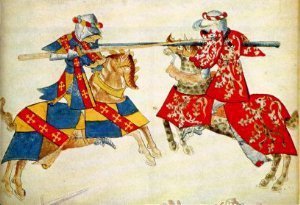 The most treasured possession of any knight was his sword, and his skill with cold steel in battle or at a tournament helped define his value. For Geoffrey Hotspur, his magnificent sword is at once a weapon, a cross, a source of moral strength, and a part of his identity. However, the invention of firearms in the 14th century expanded the range of weapons available and eventually, certainly by the end of the 16th century, rendered the armored knight and his sword obsolete. The first recorded recipe for gunpowder in Europe appears in the 13th century, but the first practical military application is found only in the early 14th century with the primitive cannon. Gunpowder technology steadily evolved during the next few generations until batteries of cannon became an essential arm of the late medieval army and city alike. For the likes of Geoffrey Hotspur, gunpowder technology was dirty, unchivalric, and inelegant. Cannons were confusing as well. Hurling missiles from a safe distance was an age old tactic and a fully integrated part of the medieval army, but whether as archers or crossbowmen, missile-throwers were always associated with the lower classes, and therefore condescended to by titled soldiers. Those with firearms fell into this category as well, of course, but because of the chemical nature of gunpowder, unlike bows, firearms held a mystical fascination that competed with the knight's aura of chivalry.
The most treasured possession of any knight was his sword, and his skill with cold steel in battle or at a tournament helped define his value. For Geoffrey Hotspur, his magnificent sword is at once a weapon, a cross, a source of moral strength, and a part of his identity. However, the invention of firearms in the 14th century expanded the range of weapons available and eventually, certainly by the end of the 16th century, rendered the armored knight and his sword obsolete. The first recorded recipe for gunpowder in Europe appears in the 13th century, but the first practical military application is found only in the early 14th century with the primitive cannon. Gunpowder technology steadily evolved during the next few generations until batteries of cannon became an essential arm of the late medieval army and city alike. For the likes of Geoffrey Hotspur, gunpowder technology was dirty, unchivalric, and inelegant. Cannons were confusing as well. Hurling missiles from a safe distance was an age old tactic and a fully integrated part of the medieval army, but whether as archers or crossbowmen, missile-throwers were always associated with the lower classes, and therefore condescended to by titled soldiers. Those with firearms fell into this category as well, of course, but because of the chemical nature of gunpowder, unlike bows, firearms held a mystical fascination that competed with the knight's aura of chivalry.
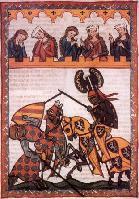 Geoffrey Hotspur wants to be a knight, but by the late 14th century was it worth the effort? Knighthood evolved out the military ethos that evolved in the post-Roman, Barbarian, newly Christianized world and coalesced into an ideal that included a wide range of virtues, including generosity, piety, courtesy, valor, as well as dexterity with arms and fidelity to one's lord. However, as the centuries wore on and the non-military orders sought to move up the social ladder, they began to reach for titles, debasing them in the process. The nature of service was expanded and redefined. When royal and ducal households were still small, the number of bureaucrats was likewise few and mostly drawn from the clerical orders. By the 14th century, the nature of medieval governance was changing so that governments had to expand. More commoners joined the higher administrations and emerged as a non-fighting titled order. In France, the distinction became known as the 'nobility of the sword' versus the 'nobility of the robe'. Therefore, how could an honest knight, who demonstrated his prowess through the tip of his lance or by the blade of his sword, reconcile with a parchment-pusher who claimed to be his social equal? If sanctioned by the powers-that-be, such a debasement of knighthood created conflict and confusion, resentment and despair, which caused the traditional, conservative aspirants to knighthood to fear for its value.
Geoffrey Hotspur wants to be a knight, but by the late 14th century was it worth the effort? Knighthood evolved out the military ethos that evolved in the post-Roman, Barbarian, newly Christianized world and coalesced into an ideal that included a wide range of virtues, including generosity, piety, courtesy, valor, as well as dexterity with arms and fidelity to one's lord. However, as the centuries wore on and the non-military orders sought to move up the social ladder, they began to reach for titles, debasing them in the process. The nature of service was expanded and redefined. When royal and ducal households were still small, the number of bureaucrats was likewise few and mostly drawn from the clerical orders. By the 14th century, the nature of medieval governance was changing so that governments had to expand. More commoners joined the higher administrations and emerged as a non-fighting titled order. In France, the distinction became known as the 'nobility of the sword' versus the 'nobility of the robe'. Therefore, how could an honest knight, who demonstrated his prowess through the tip of his lance or by the blade of his sword, reconcile with a parchment-pusher who claimed to be his social equal? If sanctioned by the powers-that-be, such a debasement of knighthood created conflict and confusion, resentment and despair, which caused the traditional, conservative aspirants to knighthood to fear for its value.
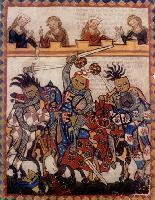 The main reward for loyal and valiant knightly service in the Middle Ages was wealth in the form of arable land, from which the knight could draw the resources necessary to equip himself, feed his family and supply his retinue. Geoffrey Hotspur is a rootless squire because he has no land. He lives in a city, Avignon, but it affords him no opportunity for career advancement, although it offers enough distractions to get him into trouble. The knight's encounter with the city was often disorienting and corrupting, as he had no place there. A knight's fee, however, was the source of his authority, something which the city could not offer in any meaningful way. It was no accident that the great knightly tales of the Middle Ages take place in a pastoral environment, whether open fields, enclosed gardens or darkened forests. Only on the open field of battle could a knight demonstrate his prowess, or in forests fight monsters, or in perfumed garden court his ideal maiden away from prying eyes. The 14th century saw the rise of cities and the merchant class, mainly in Italy but also in select places in northern Europe. As the cities grew, so did their financial and ultimately political power, which allowed citizens to invade the rural idyll of the knight by buying up land, or interfere in power politics. Geoffrey Hotspur must carefully negotiate the temptations of the city as he tries to prove himself worthy of a knighthood.
The main reward for loyal and valiant knightly service in the Middle Ages was wealth in the form of arable land, from which the knight could draw the resources necessary to equip himself, feed his family and supply his retinue. Geoffrey Hotspur is a rootless squire because he has no land. He lives in a city, Avignon, but it affords him no opportunity for career advancement, although it offers enough distractions to get him into trouble. The knight's encounter with the city was often disorienting and corrupting, as he had no place there. A knight's fee, however, was the source of his authority, something which the city could not offer in any meaningful way. It was no accident that the great knightly tales of the Middle Ages take place in a pastoral environment, whether open fields, enclosed gardens or darkened forests. Only on the open field of battle could a knight demonstrate his prowess, or in forests fight monsters, or in perfumed garden court his ideal maiden away from prying eyes. The 14th century saw the rise of cities and the merchant class, mainly in Italy but also in select places in northern Europe. As the cities grew, so did their financial and ultimately political power, which allowed citizens to invade the rural idyll of the knight by buying up land, or interfere in power politics. Geoffrey Hotspur must carefully negotiate the temptations of the city as he tries to prove himself worthy of a knighthood.
Finally, one of the greatest challenges to knighthood in the 14th century was the Black Death, or bubonic plague. It was a monster that killed half of Europe at mid-century and would regularly rear its ugly head over the subsequent three centuries. Disease and pestilence was common in the Middle Ages, but the Black Death was particularly destructive not just in terms of the sheer number of people who died form it, but its perfidious influence undermined the authority of the Church, destabilized society, fractured the medieval consensus about the social hierarchy, and interfered with the conduct of war, all of which together supported the institution of knighthood. A good squire cannot be made a knight without battle; a knighthood lost its quasi-sanctified nature without the belief in the Church; popular challenges to the social status quo made it difficult for the knight to keep his place and lands under control; mass mortality of the titled orders caused confusion about service obligations and relations. Geoffrey has to face this fatal threat daily. As a squire, he garners little enough respect from his social betters and underlings, and so if courtesy and deference break down, he might become humiliated and must find ways to gird his confidence in that what he aspires to is right and true.
-------
 Author info: Evan Ostryzniuk was born and raised on the prairies of western Canada, where he also attended the University of Saskatchewan. After graduating with a B.A. in History and Modern Languages and an M.A. in Modern History, Evan crossed the ocean to do post-graduate work at the University of Cambridge, concluding five years of research with a doctoral thesis on the Russian Revolution. He eventually found his way to eastern Europe, where he took up positions as a magazine editor, university lecturer and analyst in the financial services sector before finally settling on writing as a career. Evan Ostryzniuk currently resides in Kyiv, Ukraine. Of Faith and Fidelity: Geoffrey Hotspur and the War for St. Peter's Throne is his first novel.
Author info: Evan Ostryzniuk was born and raised on the prairies of western Canada, where he also attended the University of Saskatchewan. After graduating with a B.A. in History and Modern Languages and an M.A. in Modern History, Evan crossed the ocean to do post-graduate work at the University of Cambridge, concluding five years of research with a doctoral thesis on the Russian Revolution. He eventually found his way to eastern Europe, where he took up positions as a magazine editor, university lecturer and analyst in the financial services sector before finally settling on writing as a career. Evan Ostryzniuk currently resides in Kyiv, Ukraine. Of Faith and Fidelity: Geoffrey Hotspur and the War for St. Peter's Throne is his first novel.
Of Faith and Fidelity: Geoffrey Hotspur and the War for St. Peter's Throne is the first book in the English Free Company series set in the late Middle Ages. The English Free Company is led by Geoffrey Hotspur, an orphan-squire and ward of the mighty Duke of Lancaster, whose driving ambition is to become a knight and serve a great lord. Of Faith and Fidelity takes place in 1394, at the height of the schism of the Western Church when the throne of St. Peter was contested by rival claimants in Rome and Avignon. Unable to settle the dispute peacefully, both sides resorted to war, and the key to winning the throne of St. Peter was control of the Patrimony, a band of territory stretching the breadth of Italy that owes fealty to whichever pope who can rule it. Before Henry V won his miraculous victory at Agincourt, before the Borgias had done their infamous deeds, there was Geoffrey Hotspur, a man as tall as Charlemagne and armed with a sword that rivals Excalibur. Thrown off the established path to knighthood, the ambitious and hot-tempered Geoffrey finds himself caught up in the war between the two popes, where he must adapt his beliefs and apply his training as a squire in order to survive.
The problem of knighthood in the late Middle Ages: the case of Geoffrey Hotspur
 The consensus among historians is that the better part of the 14th century can be considered 'transitional' from the high Middle Ages, which was dominated by scholasticism, rigid feudal relations and a gothic sensibility, to the Renaissance, which engendered the birth of Humanism, merchant capitalism and the recovery of Europe's classical heritage. This raises a problem for the young Geoffrey Hotspur, the main character in my novel Of Faith and Fidelity, because almost since birth he has been training to become a knight in the very conventional sense, and if 14th century society no longer places much value in that station, then he will be lost. The challenges before the squire, then, is whether he can find a place for himself as a traditional knight, assuming that the title worth seeking once he gets a glimpse of the outside world, and how much he will have to adapt his ideal to the shifting social, economic and military landscape of late medieval Europe. However, before the cloistered orphan can make any decisions, he will have to meet head-on those manifestations of a new and emerging culture.
The consensus among historians is that the better part of the 14th century can be considered 'transitional' from the high Middle Ages, which was dominated by scholasticism, rigid feudal relations and a gothic sensibility, to the Renaissance, which engendered the birth of Humanism, merchant capitalism and the recovery of Europe's classical heritage. This raises a problem for the young Geoffrey Hotspur, the main character in my novel Of Faith and Fidelity, because almost since birth he has been training to become a knight in the very conventional sense, and if 14th century society no longer places much value in that station, then he will be lost. The challenges before the squire, then, is whether he can find a place for himself as a traditional knight, assuming that the title worth seeking once he gets a glimpse of the outside world, and how much he will have to adapt his ideal to the shifting social, economic and military landscape of late medieval Europe. However, before the cloistered orphan can make any decisions, he will have to meet head-on those manifestations of a new and emerging culture.One of the most vivid examples of change Geoffrey faces is the professional mercenary army, which was having a growing importance on the battlefields of Europe. Mercenaries, of course, were nothing new by the 14th century, and even the most majestic kings employed them alongside their levy of knights and titled men-at-arms. What changes, though, is the number and prestige of these soldiers for hire, especially in Italy, where the traditions of knighthood were weak and the institution of kingship close to non-existent. What is even more confusing for the young men brought up on the legend of King Arthur and the rituals of a feudal court is that growing number of titled families were entering professional soldiery as a respectable means of acquiring fame and honor, not to mention cold hard cash. The division between knights and mercenaries was blurring, and this transformed the military ethos of the high middle ages, whereby the right to military service was all about privilege, class distinction and maintaining the social hierarchy. The rise of the condottiere in Italy, peasant pikeman in the Swiss cantons and landsknecht in Germany changed all that.
 The most treasured possession of any knight was his sword, and his skill with cold steel in battle or at a tournament helped define his value. For Geoffrey Hotspur, his magnificent sword is at once a weapon, a cross, a source of moral strength, and a part of his identity. However, the invention of firearms in the 14th century expanded the range of weapons available and eventually, certainly by the end of the 16th century, rendered the armored knight and his sword obsolete. The first recorded recipe for gunpowder in Europe appears in the 13th century, but the first practical military application is found only in the early 14th century with the primitive cannon. Gunpowder technology steadily evolved during the next few generations until batteries of cannon became an essential arm of the late medieval army and city alike. For the likes of Geoffrey Hotspur, gunpowder technology was dirty, unchivalric, and inelegant. Cannons were confusing as well. Hurling missiles from a safe distance was an age old tactic and a fully integrated part of the medieval army, but whether as archers or crossbowmen, missile-throwers were always associated with the lower classes, and therefore condescended to by titled soldiers. Those with firearms fell into this category as well, of course, but because of the chemical nature of gunpowder, unlike bows, firearms held a mystical fascination that competed with the knight's aura of chivalry.
The most treasured possession of any knight was his sword, and his skill with cold steel in battle or at a tournament helped define his value. For Geoffrey Hotspur, his magnificent sword is at once a weapon, a cross, a source of moral strength, and a part of his identity. However, the invention of firearms in the 14th century expanded the range of weapons available and eventually, certainly by the end of the 16th century, rendered the armored knight and his sword obsolete. The first recorded recipe for gunpowder in Europe appears in the 13th century, but the first practical military application is found only in the early 14th century with the primitive cannon. Gunpowder technology steadily evolved during the next few generations until batteries of cannon became an essential arm of the late medieval army and city alike. For the likes of Geoffrey Hotspur, gunpowder technology was dirty, unchivalric, and inelegant. Cannons were confusing as well. Hurling missiles from a safe distance was an age old tactic and a fully integrated part of the medieval army, but whether as archers or crossbowmen, missile-throwers were always associated with the lower classes, and therefore condescended to by titled soldiers. Those with firearms fell into this category as well, of course, but because of the chemical nature of gunpowder, unlike bows, firearms held a mystical fascination that competed with the knight's aura of chivalry. Geoffrey Hotspur wants to be a knight, but by the late 14th century was it worth the effort? Knighthood evolved out the military ethos that evolved in the post-Roman, Barbarian, newly Christianized world and coalesced into an ideal that included a wide range of virtues, including generosity, piety, courtesy, valor, as well as dexterity with arms and fidelity to one's lord. However, as the centuries wore on and the non-military orders sought to move up the social ladder, they began to reach for titles, debasing them in the process. The nature of service was expanded and redefined. When royal and ducal households were still small, the number of bureaucrats was likewise few and mostly drawn from the clerical orders. By the 14th century, the nature of medieval governance was changing so that governments had to expand. More commoners joined the higher administrations and emerged as a non-fighting titled order. In France, the distinction became known as the 'nobility of the sword' versus the 'nobility of the robe'. Therefore, how could an honest knight, who demonstrated his prowess through the tip of his lance or by the blade of his sword, reconcile with a parchment-pusher who claimed to be his social equal? If sanctioned by the powers-that-be, such a debasement of knighthood created conflict and confusion, resentment and despair, which caused the traditional, conservative aspirants to knighthood to fear for its value.
Geoffrey Hotspur wants to be a knight, but by the late 14th century was it worth the effort? Knighthood evolved out the military ethos that evolved in the post-Roman, Barbarian, newly Christianized world and coalesced into an ideal that included a wide range of virtues, including generosity, piety, courtesy, valor, as well as dexterity with arms and fidelity to one's lord. However, as the centuries wore on and the non-military orders sought to move up the social ladder, they began to reach for titles, debasing them in the process. The nature of service was expanded and redefined. When royal and ducal households were still small, the number of bureaucrats was likewise few and mostly drawn from the clerical orders. By the 14th century, the nature of medieval governance was changing so that governments had to expand. More commoners joined the higher administrations and emerged as a non-fighting titled order. In France, the distinction became known as the 'nobility of the sword' versus the 'nobility of the robe'. Therefore, how could an honest knight, who demonstrated his prowess through the tip of his lance or by the blade of his sword, reconcile with a parchment-pusher who claimed to be his social equal? If sanctioned by the powers-that-be, such a debasement of knighthood created conflict and confusion, resentment and despair, which caused the traditional, conservative aspirants to knighthood to fear for its value. The main reward for loyal and valiant knightly service in the Middle Ages was wealth in the form of arable land, from which the knight could draw the resources necessary to equip himself, feed his family and supply his retinue. Geoffrey Hotspur is a rootless squire because he has no land. He lives in a city, Avignon, but it affords him no opportunity for career advancement, although it offers enough distractions to get him into trouble. The knight's encounter with the city was often disorienting and corrupting, as he had no place there. A knight's fee, however, was the source of his authority, something which the city could not offer in any meaningful way. It was no accident that the great knightly tales of the Middle Ages take place in a pastoral environment, whether open fields, enclosed gardens or darkened forests. Only on the open field of battle could a knight demonstrate his prowess, or in forests fight monsters, or in perfumed garden court his ideal maiden away from prying eyes. The 14th century saw the rise of cities and the merchant class, mainly in Italy but also in select places in northern Europe. As the cities grew, so did their financial and ultimately political power, which allowed citizens to invade the rural idyll of the knight by buying up land, or interfere in power politics. Geoffrey Hotspur must carefully negotiate the temptations of the city as he tries to prove himself worthy of a knighthood.
The main reward for loyal and valiant knightly service in the Middle Ages was wealth in the form of arable land, from which the knight could draw the resources necessary to equip himself, feed his family and supply his retinue. Geoffrey Hotspur is a rootless squire because he has no land. He lives in a city, Avignon, but it affords him no opportunity for career advancement, although it offers enough distractions to get him into trouble. The knight's encounter with the city was often disorienting and corrupting, as he had no place there. A knight's fee, however, was the source of his authority, something which the city could not offer in any meaningful way. It was no accident that the great knightly tales of the Middle Ages take place in a pastoral environment, whether open fields, enclosed gardens or darkened forests. Only on the open field of battle could a knight demonstrate his prowess, or in forests fight monsters, or in perfumed garden court his ideal maiden away from prying eyes. The 14th century saw the rise of cities and the merchant class, mainly in Italy but also in select places in northern Europe. As the cities grew, so did their financial and ultimately political power, which allowed citizens to invade the rural idyll of the knight by buying up land, or interfere in power politics. Geoffrey Hotspur must carefully negotiate the temptations of the city as he tries to prove himself worthy of a knighthood.Finally, one of the greatest challenges to knighthood in the 14th century was the Black Death, or bubonic plague. It was a monster that killed half of Europe at mid-century and would regularly rear its ugly head over the subsequent three centuries. Disease and pestilence was common in the Middle Ages, but the Black Death was particularly destructive not just in terms of the sheer number of people who died form it, but its perfidious influence undermined the authority of the Church, destabilized society, fractured the medieval consensus about the social hierarchy, and interfered with the conduct of war, all of which together supported the institution of knighthood. A good squire cannot be made a knight without battle; a knighthood lost its quasi-sanctified nature without the belief in the Church; popular challenges to the social status quo made it difficult for the knight to keep his place and lands under control; mass mortality of the titled orders caused confusion about service obligations and relations. Geoffrey has to face this fatal threat daily. As a squire, he garners little enough respect from his social betters and underlings, and so if courtesy and deference break down, he might become humiliated and must find ways to gird his confidence in that what he aspires to is right and true.
-------
 Author info: Evan Ostryzniuk was born and raised on the prairies of western Canada, where he also attended the University of Saskatchewan. After graduating with a B.A. in History and Modern Languages and an M.A. in Modern History, Evan crossed the ocean to do post-graduate work at the University of Cambridge, concluding five years of research with a doctoral thesis on the Russian Revolution. He eventually found his way to eastern Europe, where he took up positions as a magazine editor, university lecturer and analyst in the financial services sector before finally settling on writing as a career. Evan Ostryzniuk currently resides in Kyiv, Ukraine. Of Faith and Fidelity: Geoffrey Hotspur and the War for St. Peter's Throne is his first novel.
Author info: Evan Ostryzniuk was born and raised on the prairies of western Canada, where he also attended the University of Saskatchewan. After graduating with a B.A. in History and Modern Languages and an M.A. in Modern History, Evan crossed the ocean to do post-graduate work at the University of Cambridge, concluding five years of research with a doctoral thesis on the Russian Revolution. He eventually found his way to eastern Europe, where he took up positions as a magazine editor, university lecturer and analyst in the financial services sector before finally settling on writing as a career. Evan Ostryzniuk currently resides in Kyiv, Ukraine. Of Faith and Fidelity: Geoffrey Hotspur and the War for St. Peter's Throne is his first novel. Of Faith and Fidelity: Geoffrey Hotspur and the War for St. Peter's Throne is the first book in the English Free Company series set in the late Middle Ages. The English Free Company is led by Geoffrey Hotspur, an orphan-squire and ward of the mighty Duke of Lancaster, whose driving ambition is to become a knight and serve a great lord. Of Faith and Fidelity takes place in 1394, at the height of the schism of the Western Church when the throne of St. Peter was contested by rival claimants in Rome and Avignon. Unable to settle the dispute peacefully, both sides resorted to war, and the key to winning the throne of St. Peter was control of the Patrimony, a band of territory stretching the breadth of Italy that owes fealty to whichever pope who can rule it. Before Henry V won his miraculous victory at Agincourt, before the Borgias had done their infamous deeds, there was Geoffrey Hotspur, a man as tall as Charlemagne and armed with a sword that rivals Excalibur. Thrown off the established path to knighthood, the ambitious and hot-tempered Geoffrey finds himself caught up in the war between the two popes, where he must adapt his beliefs and apply his training as a squire in order to survive.
Published on June 06, 2011 22:00
May 31, 2011
Book review: Shadows of a Down East Summer, by Lea Wait
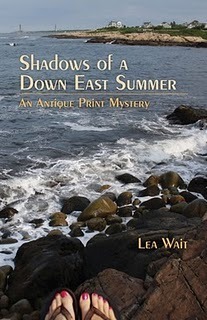 This skillfully drawn multi-period mystery blends present-day crime with scenes from 1890, a year when painter Winslow Homer was living and creating his masterworks along the picturesque Maine coast.
This skillfully drawn multi-period mystery blends present-day crime with scenes from 1890, a year when painter Winslow Homer was living and creating his masterworks along the picturesque Maine coast.American Studies professor and antique print dealer Maggie Summer hopes to spend her holiday relaxing with her boyfriend Will at his great-aunt Nettie's house in Waymouth, Maine, but things don't turn out as planned. While Will dutifully performs home repairs for his relative, Maggie is asked to help a family friend, Carolyn Chase, conduct research on her mother, a noted 20th-century artist. Despite their brief acquaintance, due to her reputation and expertise Maggie ends up as the caretaker for some papers belonging to Carolyn's family, including a century-old journal.
Maggie becomes drawn into the story of Anna May Pratt, a young woman who posed for several of Winslow Homer's paintings alongside her best friend, Jessie. In her diary, Anna May expresses delight at the opportunity she and Jessie are offered, despite their initial wariness at being asked to let their hair down (literally) and wear outfits more appropriate to fisherwomen.
So calming is the seaside atmosphere in both the modern and historical scenarios that when a murder occurs, it comes as a shock. The diary contains long-held secrets someone is willing to kill for.
Genealogy buffs will enjoy sorting out the family relationships, and although careful readers will discern part of the puzzle long before Maggie does, it doesn't make the parallel stories any less involving. The jealous rivalries present in both timelines demonstrate that human nature hasn't changed much.
Wait includes the colorful characters expected for this small-town setting and a sufficient dose of suspense. She also adds plenty of educational details on the antique trade and many mouthwatering examples of Down East cuisine. Recommended.
Shadows of a Down East Summer was published by Perseverance Press, a small press publisher of mysteries, in April at $14.95 (trade pb, 236pp). I reviewed it for May's Historical Novels Review and thought I'd share my review here as well. The novel is 5th in the Antique Print mystery series, but I didn't feel lost without having read the others.
Published on May 31, 2011 16:05
May 29, 2011
My BEA book collection, part one
I'm just back from an invigorating yet overwhelming week in NYC for BEA and the book blogger con. These are the BEA titles that came home in my luggage, either because they were signed copies I didn't want to risk shipping or because I got them at the blogger con on the last day. My husband took the rest of them over to FedEx on the last day of the show.
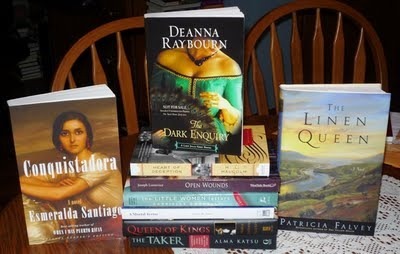
Most of these were titles I mentioned in my post about historical fiction picks at BEA. There were many other titles on that list I didn't get, either because I didn't see them - like The Lantern - or because the signing lines were amazingly long. My back doesn't tolerate standing for long periods, unfortunately, so my waiting 45+ minutes in line for a signed copy of Alice Hoffman's The Dovekeepers just wasn't in the cards. I looked on jealously as I passed by.
I was pleased to come across a previously unannounced signing of Patricia Falvey's The Linen Queen, though - it's a love story set in Northern Ireland on the brink of WWII. Of the other titles above, Open Wounds is a new YA set in Depression-era Queens, and The Little Women Letters is a mostly contemporary tale about a descendant of Jo March from Little Women who finds letters written by her ancestress. These latter two were giveaways at the blogger con. As with last year, it was great to get the chance to meet so many bloggers, authors, and publishers in person when I was in NY.
Things may be quieter than usual around here, at least in terms of reviews, until after the Historical Novel Society conference in 2.5 weeks. There's a ton that needs doing before then, many loads of laundry included, plus I came home to three freelance assignments with shortish deadlines. One of these is the new Philippa Gregory, so that will be forthcoming in a bit.

Most of these were titles I mentioned in my post about historical fiction picks at BEA. There were many other titles on that list I didn't get, either because I didn't see them - like The Lantern - or because the signing lines were amazingly long. My back doesn't tolerate standing for long periods, unfortunately, so my waiting 45+ minutes in line for a signed copy of Alice Hoffman's The Dovekeepers just wasn't in the cards. I looked on jealously as I passed by.
I was pleased to come across a previously unannounced signing of Patricia Falvey's The Linen Queen, though - it's a love story set in Northern Ireland on the brink of WWII. Of the other titles above, Open Wounds is a new YA set in Depression-era Queens, and The Little Women Letters is a mostly contemporary tale about a descendant of Jo March from Little Women who finds letters written by her ancestress. These latter two were giveaways at the blogger con. As with last year, it was great to get the chance to meet so many bloggers, authors, and publishers in person when I was in NY.
Things may be quieter than usual around here, at least in terms of reviews, until after the Historical Novel Society conference in 2.5 weeks. There's a ton that needs doing before then, many loads of laundry included, plus I came home to three freelance assignments with shortish deadlines. One of these is the new Philippa Gregory, so that will be forthcoming in a bit.
Published on May 29, 2011 17:18
May 25, 2011
Guest post from Mary Tod: Researching Is a Sleeves-Rolled-Up Process
Today Mary Tod, a historical fiction writer and fellow blogger from Canada, is stopping by with a guest essay on the many different facets to her research involving the First World War. Thanks very much, Mary, and welcome!
Researching is a sleeves-rolled-up process
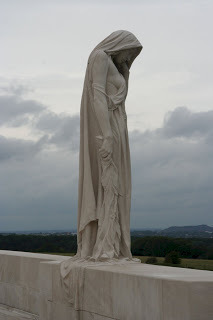 Six years ago when I began writing historical fiction, I had no idea where the journey would take me. Nor did I have any idea of how much I would enjoy the research involved. I was an expat wife, often called the trailing spouse in the world of international assignments, and I landed in Hong Kong with nothing to do. Having worked for thirty years, this was a problem.
Six years ago when I began writing historical fiction, I had no idea where the journey would take me. Nor did I have any idea of how much I would enjoy the research involved. I was an expat wife, often called the trailing spouse in the world of international assignments, and I landed in Hong Kong with nothing to do. Having worked for thirty years, this was a problem.
After many frustrating months, I decided to take matters into my own hands and write a book about my grandparents who lived through two world wars and the great depression - surely their experiences would provide the foundation for a novel, I thought. What has emerged from this vague beginning are three novels and ideas for many more. Along the way, I developed a passion for WWI and WWII and a host of research techniques and sources.
Sarah has kindly invited me to tell you a bit about the research that goes into historical fiction. Being a list making gal, I've organized my thoughts by topic:
WWW
* I have several favorite WWI websites that I frequent for information on battles, maps, timelines, photos, personalities and the tools of war. Visiting these sites allows me to adhere to reality amidst the liberty of fiction. They also spark ideas to make each story come alive.
Official War Diaries
* The Canadian government has an entire collection of official war diaries recording day to day events of every Canadian battalion. Governments can do some things right! I have spent hours poring through these pdf images looking for inspiration and accurate information. For example, my latest novel involves the heroine tracing her grandfather's WWI experiences to solve a mystery. I placed this man in the 19th Battalion of the 4th Infantry Brigade, and using the war diaries, I know exactly where he is every day of the war.
Fullbooks
* Much to my delight, I came across this site offering books of historical interest online at no cost. Of great value to me are Edith Wharton's journals describing WWI France, Mildred Aldrich's letters written from a small village near the front lines, and Charles Inman Barnard's description of Paris on the brink of war. From another site I found Ruth Gaines' vignettes of Picardy in 1918. All have been very helpful as I wrote about living with war in two of my novels.
My growing fiction and non-fiction collection
* Every time I visit my local bookstore or browse for an e-book, I look for new materials. Amongst others, my collection of non-fiction includes Vimy by Pierre Berton and Unlikely Soldiers by Jonathan Vance, the first is a detailed account of that famous WWI battle, the second is the true story of two WWII spies. Both offered deep insight into the war experience.
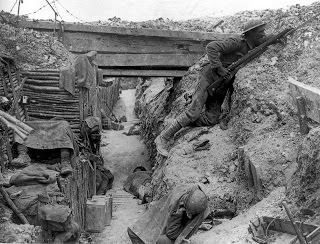 * My fiction collection includes authors like Anne Perry, Ben Elton, Pat Barker, Anita Shreve, Scott Turow, Joseph Boyden, William Woodruff, Siegfried Sassoon, Frances Itani and others. Wonderful works. My copies are well thumbed and well marked.
* My fiction collection includes authors like Anne Perry, Ben Elton, Pat Barker, Anita Shreve, Scott Turow, Joseph Boyden, William Woodruff, Siegfried Sassoon, Frances Itani and others. Wonderful works. My copies are well thumbed and well marked.
Diaries and letters
* To add reality to my characters' voices, I have perused many personal accounts of war, particularly WWI, and discovered phrases and language patterns of the day. I find it both amazing and heart warming to see so many soldiers honored by their families through websites and blogs containing letters, photos and personal details. British, American, Canadian, Australian, New Zealand stories are there for all to see. If you read French or German, you can find even more diaries.
* A particularly interesting book is The Letters of Agar Adamson, a WWI captain who enlisted at the age of 48. Fascinating first hand account.
Google & Google maps
* Ah, Google. An amazing source as every reader and writer knows, a place to find tidbits like the construction of a kite or the names of troop transport ships and to stumble upon serendipity like French marriage rituals or the lions outside New York's main library.
* Using Google maps I can look at tiny villages like Villers-au-Bois or larger places like Amiens and can then check the surrounding countryside to see the contours of the land, the placement of crossroads, the bends in a river. I can then match war-time photos with present day in order to breathe life into descriptions of a picnic, a country drive, a battlefield or a behind the lines view.
Museums
* To date I've visited museums in England, Canada and France. These buildings, whether large or small, house a wealth of photos, posters, dioramas and context to augment my stories. In some cases, they include the sounds of war which are crucial to a writer's toolbox. While visiting, I've taken many pictures and notes.
Personal travel
* Last summer my husband and I traveled to northern France with the express purpose of seeing WWI battle sites and memorials as well as the lands of Picardy and Nord-Pas-de-Calais where so many battles occurred. I filled an entire notebook and came home with over five hundred pictures.
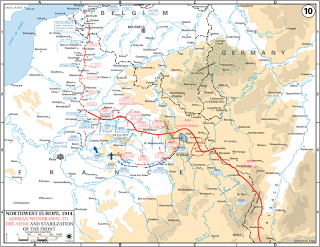
* While sitting in a cafe having dinner one night, my third novel was born. You never know what a glass or two of French wine will inspire!
Movies
* Whenever I have the opportunity to watch a movie set in either war, I do using my ever-present notebook to jot thoughts as the movie unfolds. What I look for most is sounds and visuals.
Fashion
* In addition to photos of the time, I've discovered a few fashion websites like www.fashion-era.com or www.victoriana.com or www.costumes.org. Pictures and descriptions from these sites give little snippets to use when setting a scene or introducing a character.
Sounds
* Historical radio broadcasts have also helped. Hearing a speech made by Woodrow Wilson or King Edward VIII, listening to a reporter recount the actual Dieppe landing raids or hearing songs from the past make that world come alive in a visceral manner.
I am fortunate that the world wars are relatively recent and as a consequence easier to research. Nonetheless, I often work for hours in order to write a few sentences. Good thing I enjoy the process!
Bio
Mary Tod writes historical fiction with a focus on WWI and WWII. Her novel, Lies Told in Silence is represented by Anne McDermid & Associates. While The Secret Sits is a companion novel with intersecting characters. A third novel, Blind Regret is nearing completion.
Mary posts frequently on the topics of historical fiction and the business of writing on her blog, One Writer's Voice.
Researching is a sleeves-rolled-up process
 Six years ago when I began writing historical fiction, I had no idea where the journey would take me. Nor did I have any idea of how much I would enjoy the research involved. I was an expat wife, often called the trailing spouse in the world of international assignments, and I landed in Hong Kong with nothing to do. Having worked for thirty years, this was a problem.
Six years ago when I began writing historical fiction, I had no idea where the journey would take me. Nor did I have any idea of how much I would enjoy the research involved. I was an expat wife, often called the trailing spouse in the world of international assignments, and I landed in Hong Kong with nothing to do. Having worked for thirty years, this was a problem.After many frustrating months, I decided to take matters into my own hands and write a book about my grandparents who lived through two world wars and the great depression - surely their experiences would provide the foundation for a novel, I thought. What has emerged from this vague beginning are three novels and ideas for many more. Along the way, I developed a passion for WWI and WWII and a host of research techniques and sources.
Sarah has kindly invited me to tell you a bit about the research that goes into historical fiction. Being a list making gal, I've organized my thoughts by topic:
WWW
* I have several favorite WWI websites that I frequent for information on battles, maps, timelines, photos, personalities and the tools of war. Visiting these sites allows me to adhere to reality amidst the liberty of fiction. They also spark ideas to make each story come alive.
Official War Diaries
* The Canadian government has an entire collection of official war diaries recording day to day events of every Canadian battalion. Governments can do some things right! I have spent hours poring through these pdf images looking for inspiration and accurate information. For example, my latest novel involves the heroine tracing her grandfather's WWI experiences to solve a mystery. I placed this man in the 19th Battalion of the 4th Infantry Brigade, and using the war diaries, I know exactly where he is every day of the war.
Fullbooks
* Much to my delight, I came across this site offering books of historical interest online at no cost. Of great value to me are Edith Wharton's journals describing WWI France, Mildred Aldrich's letters written from a small village near the front lines, and Charles Inman Barnard's description of Paris on the brink of war. From another site I found Ruth Gaines' vignettes of Picardy in 1918. All have been very helpful as I wrote about living with war in two of my novels.
My growing fiction and non-fiction collection
* Every time I visit my local bookstore or browse for an e-book, I look for new materials. Amongst others, my collection of non-fiction includes Vimy by Pierre Berton and Unlikely Soldiers by Jonathan Vance, the first is a detailed account of that famous WWI battle, the second is the true story of two WWII spies. Both offered deep insight into the war experience.
 * My fiction collection includes authors like Anne Perry, Ben Elton, Pat Barker, Anita Shreve, Scott Turow, Joseph Boyden, William Woodruff, Siegfried Sassoon, Frances Itani and others. Wonderful works. My copies are well thumbed and well marked.
* My fiction collection includes authors like Anne Perry, Ben Elton, Pat Barker, Anita Shreve, Scott Turow, Joseph Boyden, William Woodruff, Siegfried Sassoon, Frances Itani and others. Wonderful works. My copies are well thumbed and well marked.Diaries and letters
* To add reality to my characters' voices, I have perused many personal accounts of war, particularly WWI, and discovered phrases and language patterns of the day. I find it both amazing and heart warming to see so many soldiers honored by their families through websites and blogs containing letters, photos and personal details. British, American, Canadian, Australian, New Zealand stories are there for all to see. If you read French or German, you can find even more diaries.
* A particularly interesting book is The Letters of Agar Adamson, a WWI captain who enlisted at the age of 48. Fascinating first hand account.
Google & Google maps
* Ah, Google. An amazing source as every reader and writer knows, a place to find tidbits like the construction of a kite or the names of troop transport ships and to stumble upon serendipity like French marriage rituals or the lions outside New York's main library.
* Using Google maps I can look at tiny villages like Villers-au-Bois or larger places like Amiens and can then check the surrounding countryside to see the contours of the land, the placement of crossroads, the bends in a river. I can then match war-time photos with present day in order to breathe life into descriptions of a picnic, a country drive, a battlefield or a behind the lines view.
Museums
* To date I've visited museums in England, Canada and France. These buildings, whether large or small, house a wealth of photos, posters, dioramas and context to augment my stories. In some cases, they include the sounds of war which are crucial to a writer's toolbox. While visiting, I've taken many pictures and notes.
Personal travel
* Last summer my husband and I traveled to northern France with the express purpose of seeing WWI battle sites and memorials as well as the lands of Picardy and Nord-Pas-de-Calais where so many battles occurred. I filled an entire notebook and came home with over five hundred pictures.

* While sitting in a cafe having dinner one night, my third novel was born. You never know what a glass or two of French wine will inspire!
Movies
* Whenever I have the opportunity to watch a movie set in either war, I do using my ever-present notebook to jot thoughts as the movie unfolds. What I look for most is sounds and visuals.
Fashion
* In addition to photos of the time, I've discovered a few fashion websites like www.fashion-era.com or www.victoriana.com or www.costumes.org. Pictures and descriptions from these sites give little snippets to use when setting a scene or introducing a character.
Sounds
* Historical radio broadcasts have also helped. Hearing a speech made by Woodrow Wilson or King Edward VIII, listening to a reporter recount the actual Dieppe landing raids or hearing songs from the past make that world come alive in a visceral manner.
I am fortunate that the world wars are relatively recent and as a consequence easier to research. Nonetheless, I often work for hours in order to write a few sentences. Good thing I enjoy the process!
Bio
Mary Tod writes historical fiction with a focus on WWI and WWII. Her novel, Lies Told in Silence is represented by Anne McDermid & Associates. While The Secret Sits is a companion novel with intersecting characters. A third novel, Blind Regret is nearing completion.
Mary posts frequently on the topics of historical fiction and the business of writing on her blog, One Writer's Voice.
Published on May 25, 2011 04:00



